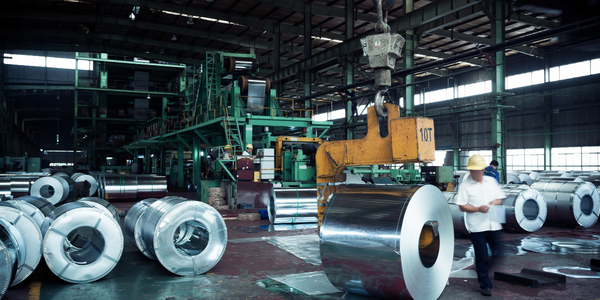Technology Category
- Cybersecurity & Privacy - Identity & Authentication Management
- Cybersecurity & Privacy - Security Compliance
Applicable Industries
- Metals
- Paper & Pulp
Applicable Functions
- Quality Assurance
Use Cases
- Onsite Human Safety Management
- Time Sensitive Networking
About The Customer
Tomago Aluminium is the largest aluminum smelter in Australasia, operating 24 hours a day since 1983. The company contributes $1.5 billion annually to the Australian economy, of which $800 million is spent locally. The smelter produces 585,000 tons of aluminum every year, which accounts for 25% of Australia’s primary aluminum. 90% of the product is exported to the Asia-Pacific region. The company has 840 pots that are extremely important to the business, as any instability could cost the company millions of dollars. Therefore, it is crucial for the company to find and resolve problems quickly.
The Challenge
Tomago Aluminium, Australasia’s largest aluminum smelter, was grappling with a disconnected IT infrastructure and an over-reliance on paper forms and email-based processes. This led to a lack of transparency and visibility into potential safety issues, making it difficult to ensure that tasks were being carried out safely and that safety issues were addressed promptly. The company was using surveys within SharePoint and paper forms to conduct life-saving controls, which created safety risks and made reporting difficult. Additionally, the company had to audit its 840 pots daily, a process that was tedious and time-consuming. The data collected from the pots had to be written down manually and then entered into a shared spreadsheet, a process that was prone to errors and inefficiencies.
The Solution
Tomago Aluminium implemented several solutions with K2 Software to automate its key processes. The software allowed the company to utilize an SQL database and integrate solutions with SAP, providing the flexibility to develop additional business solutions to improve efficiency and cut costs. The life-saving control process was automated, enabling employees to log issues automatically and check the status of safety tasks easily. The company also automated the pot auditing process. Auditors now enter data on-site using their mobile phones and a stylus, and the data is consolidated by the time they return to their desks. A Power BI report is automatically generated with the appropriate data and graphs, and copies are emailed to all necessary parties. The company also automated over a dozen other processes, including statutory compliance and contractor onboarding.
Operational Impact
Quantitative Benefit

Case Study missing?
Start adding your own!
Register with your work email and create a new case study profile for your business.
Related Case Studies.

Case Study
Goldcorp: Internet of Things Enables the Mine of the Future
Goldcorp is committed to responsible mining practices and maintaining maximum safety for its workers. At the same time, the firm is constantly exploring ways to improve the efficiency of its operations, extend the life of its assets, and control costs. Goldcorp needed technology that can maximize production efficiency by tracking all mining operations, keep employees safe with remote operations and monitoring of hazardous work areas and control production costs through better asset and site management.

Case Study
KSP Steel Decentralized Control Room
While on-site in Pavlodar, Kazakhstan, the DAQRI team of Business Development and Solutions Architecture personnel worked closely with KSP Steel’s production leadership to understand the steel production process, operational challenges, and worker pain points.

Case Study
Bluescope Steel on Path to Digitally Transform Operations and IT
Increasing competition and fluctuations in the construction market prompted BlueScope Steel to look toward digital transformation of its four businesses, including modern core applications and IT infrastructure. BlueScope needed to modernize its infrastructure and adopt new technologies to improve operations and supply chain efficiency while maintaining and updating an aging application portfolio.

Case Study
RobotStudio Case Study: Benteler Automobiltechnik
Benteler has a small pipe business area for which they produce fuel lines and coolant lines made of aluminum for Porsche and other car manufacturers. One of the problems in production was that when Benteler added new products, production had too much downtime.

Case Study
Continuous Casting Machines in a Steel Factory
With a very broad range of applications, steel is an important material and has been developed into the most extensive alloy in the engineering world. Since delivering high quality is absolutely crucial for steel plants, ensuring maximum productivity and the best quality production are the keys to competitiveness in the steel industry. Additionally, working conditions in steel factories are not suitable for workers to stay in for long periods of time, so manufactures usually adopt various machines to complete the steel production processes. However, the precision of these machines is often overestimated and the lack of flexibility also makes supervisors unable to adjust operating procedures. A renowned steel factory in Asia planned to improve its Distributed Control System (DCS) of furnaces as well as addressing the problem of insufficient accuracy. However, most well-known international equipment suppliers can not provide a satisfactory solution and local maintenance because the project needed new technologies to more accurately control equipment operations. By implementing Advantech’s automated monitoring and control solution, steel factories can not only improve the manufacturing processes but can also allow users to add additional functions to the existing system so as to make sure the operation runs at high efficiency.

Case Study
Automated Predicitive Analytics For Steel/Metals Industry
Asset to be monitored: Wire Compactor that produces Steel RebarCustomer Faced The Following Challenges:Dependent upon machine uptime.Pressure cylinders within the compactor fail to control compression and speed causing problems in binding the coil.Equipment failure occurs in the final stage of production causing the entire line to stop, can you say bottleneck?Critical asset unequipped with sensors to produce data.



